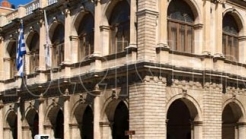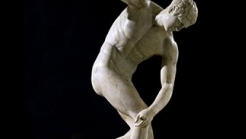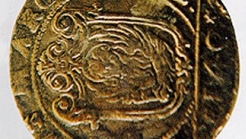

Greece
Τhe report of the Archaeological Museum Rethymno include items from various excavations and give a timeless image of cultural history of the country from the Neolithic period to the years of Roman occupancy.
The collections include:
- Findings from late neolithic (3500 – 2900 B.C. ) and early minoan (2800 – 2100 b.c. ) years from the caves Geranium, Melidonioy, Margelon and Εlenon.
- Findings minoan era (2100 – 1600 BC) from the building blocks of Apodoyloy, Monastiraki and the holy peak in Βrisina.
-Findings late minoan era (1600 – 1100 BC) of the cemeteries in the region. Representative is the cemetery of Kalyvon.
- Findings geometric (1000 – 700 B.C. ) and archaic (700 – 500 B.C. ) years of Eleftherna and Axos.
- Findings classical, Hellenistic era and roman years from Stavromenos and Argyroupolis (Lappa).
One of the most important exhibits of the Museum are:
- Larnaca with imaging hunting scene from Armeni Ancient Necropolis of Kalyvon (1320 – 1200 BC).
- Figurine minoan goddess “ICU ‘ towering hands”from the Pagalochori (1320 – 1200 BC).
- Marble statue Aphrodite of Argyroupolis (1ST A.D. b.c. ).
- Marble figurine from Gerani cave (3600 – 3200 BC).
- Clay phantom temple from which survived the floor, from the Monastiraki (1800 – 1700 BC).
- Part Galindolowland phantom bank tenders with inscription in linear A writing, from the sacred summit Βrisina (1700 – 1600 BC).
- Ηθμοπυξίδα from Stavromenos. Clay ajar vessel with foot and cap. The bottom of it is pierced. Bear decor from continuous coils and plants. (1500 – 1450 BC).
- Head clay female figurine from Axos (around 530 B.C. ).
- Part of marble grave column from Stavromenos. Shown naked athlete with dog (about 460 B.C. ).


Loggia was the Club of Venetian and Cretan rulers of the Kingdom of Crete. Today it accommodates the Municipality of Heraklion. The building that is visible today it is build in the time of Francis Morosini in 1628. Winged lion of The Most Serene Republic of Adriatic is everywhere.


The aim of the exhibition is not only to provide info on the games in ancient times, but also to initiate the visitor in what the Olympics were.


The museum was founded in 1967 and opened in September 1993. Housed in a building that exemplifies local traditional architecture and developed at two levels.
1039 Ε 6061 01515 00